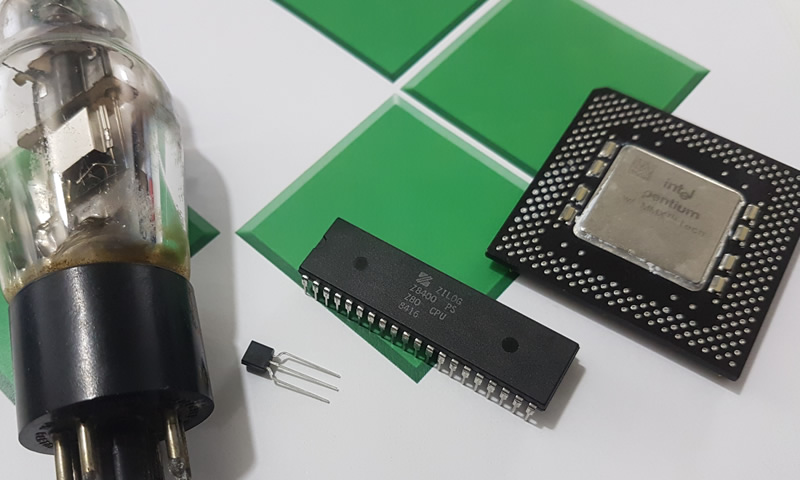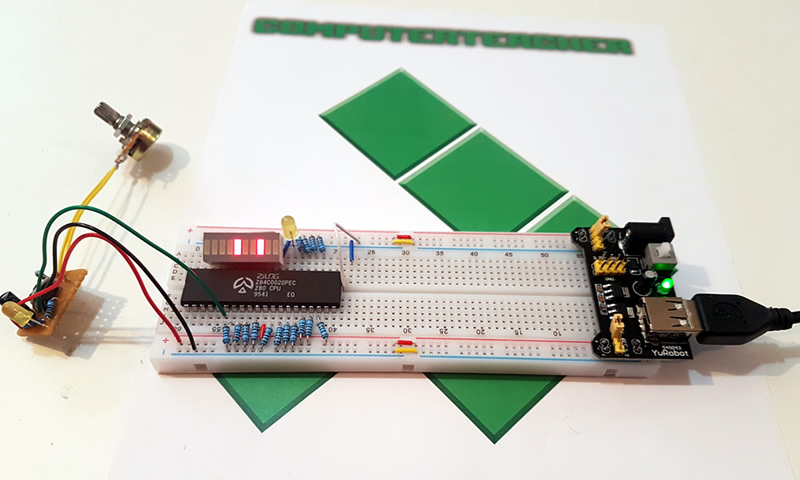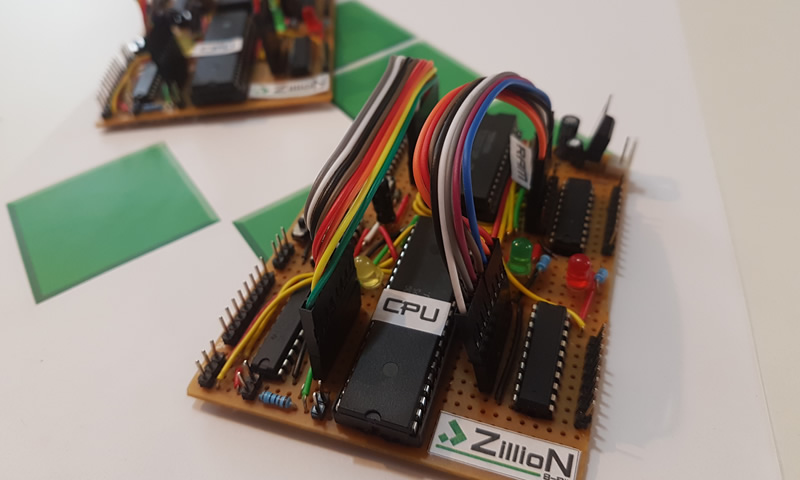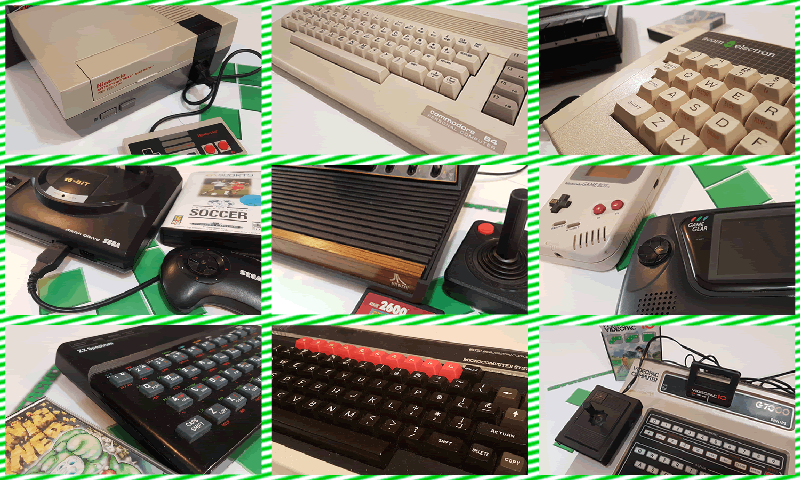Rooming & Equipment
This workshop can be done in a non-computer room.A huge collection of retro video games consoles are supplied by Computerteacher.
-Binatone TV Master (Pong)
-Atari 2600 & Philips G7000
-NES & Master System
-SNES & Megadrive
-N64, Playstation, Saturn
-Gamecube, PS2, Xbox, Dreamcast
-Wii, PS3, Xbox 360
Some handheld consoles:
– Gameboy, GBA, DS, 2DS
– Gamegear
Also some 8-bit microcomputers :
– Sinclair ZX81 & Spectrum
– Acorn Electron & BBC Micro
– Commodore 64
CPU types & speeds, Memory & Storage Devices
Students will investigate the technical specifications of the machines and see how that influences what they are capable of.
Students can learn plenty of Computer Science from retro games consoles & microcomputers. The 8 bit era in particular lends itself well to understanding how simple computers work at a hardware level.

CPU speeds & storage media have evolved over the years so students can see the implications of increasing processor speed, extra memory and different storage media.
When looking at the machines in more detail, the simplicity of the 8-bit consoles makes learning about concepts like the ‘Fetch Execute Cycle’ nice and simple. They will also get to see some simple 8-bit computers running and watch the binary instructions being fetched & executed.
Von Neumann architecture:
MAR (Memory Address Register)
MDR (Memory Data Register)
Program Counter
Accumulator
Common CPU components and their function:
ALU (Arithmetic Logic Unit)
CU (Control Unit)
the function of the CPU as fetch and execute instructions stored in memory
how common characteristics of CPUs affect their performance:
clock speed
number of cores
Explore:
the difference between RAM and ROM
the purpose of ROM in a computer system
the purpose of RAM in a computer system
the need for secondary storage
data capacity and calculation of data capacity requirements
common types of storage:
optical
magnetic
solid state
Share this Post
3,142 total views, 1 views today




